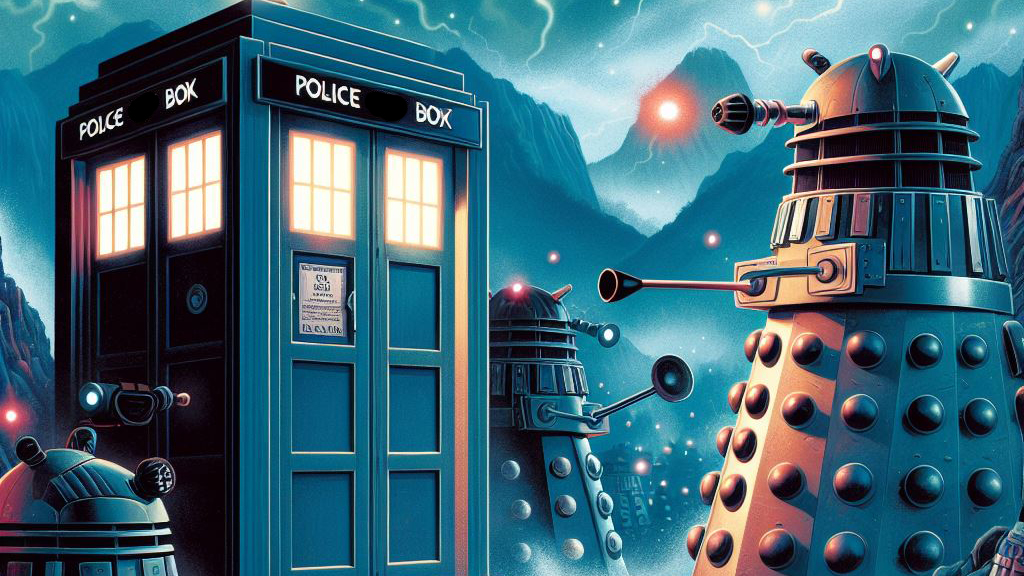Delving into the realm of classic Doctor Who is akin to embarking on a journey through the annals of science fiction history, where every turn in the TARDIS unveils a new facet of storytelling magnificence that has enchanted audiences since its inception in 1963.
Doctor Who is a British science fiction television program that has been running since 1963.
It follows the adventures of a mysterious alien known as the Doctor, who travels through time and space in his blue police box called the TARDIS, with various companions.
Doctor Who is a series renowned for its boundless imagination, intricate storytelling, and the enduring legacy of its titular character.
The show has seen various actors take on the role of the Doctor, resulting in distinct eras and episodes that contribute to the rich tapestry of the Whovian universe.
The first seven Doctors are considered part of the classic era, which ran from 1963 to 1989.
The classic era consists of multi-episode serials, each with its own title and storyline.
Some of these serials are considered to be the best examples of Doctor Who’s creativity, humor, horror, and drama.
In order of release, these are 14 of our favorite Classic Doctor Who episodes. (If you’re looking for must-watch episodes of New Who, we’ve got you covered on that, too.)
Did we miss an episode? Tell us in the comments below.
1. An Unearthly Child (1963)
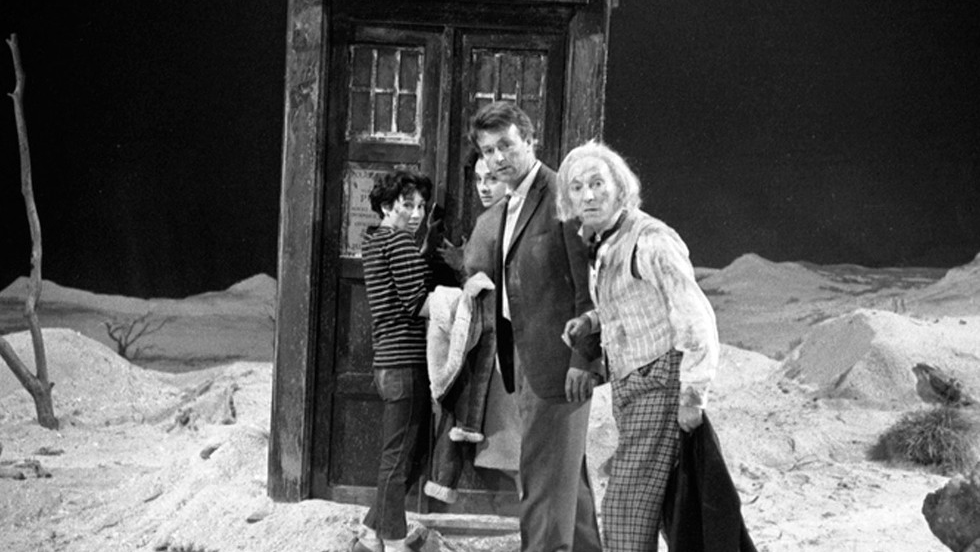
An Unearthly Child is the first serial of the first season of Doctor Who, which was first broadcast on November 23 to December 14, 1963.
The serial introduces William Hartnell as the First Doctor and his original companions: Carole Ann Ford as the Doctor’s granddaughter, Susan Foreman, with Jacqueline Hill and William Russell as school teachers Barbara Wright and Ian Chesterton.
The first episode deals with Ian and Barbara’s discovery of the Doctor and his time-space ship, the TARDIS, in a junkyard in contemporary London.
The remaining episodes are set amid a power struggle between warring Stone Age factions who have lost the secret of making fire.
Beginning of an Epic Journey
An Unearthly Child is the story that started it all, the story that launched one of the most popular and longest-running sci-fi shows ever.
It is the story that established the basic premise and format of Doctor Who, as well as the character of the Doctor as an enigmatic and sometimes irascible alien.
It is also the story that introduced the concept of the TARDIS, a bigger-on-the-inside time machine that can take the Doctor and his companions anywhere in time and space.
An Unearthly Child is also the story that began an epic journey for the Doctor and his companions, a journey that would take them to different worlds and different times, where they would encounter wonders and horrors, friends and foes, and history and mystery.
It is also the story that began an epic journey for the viewers, a journey that would span decades and generations, where they would witness the evolution and regeneration of the Doctor and his adventures.
An Intriguing Mystery
An Unearthly Child is a story that draws you in with its captivating and intriguing mystery.
The story begins with a simple question: who is Susan Foreman?
She is a teenage girl who attends Coal Hill School in London, but she seems to have an alien outlook on England.
She has extraordinary knowledge of science and history, but she also makes strange mistakes and claims.
She lives with her grandfather in a junkyard, but she also says they come from another time and place.
The story then follows her teachers, Ian Chesterton and Barbara Wright, who are curious about her and decide to follow her home one night.
There, they discover a police box in the junkyard, which turns out to be a disguised time machine called the TARDIS.
They also meet Susan’s grandfather, who calls himself the Doctor, but refuses to reveal his true identity or origin.
He kidnaps them and takes them back to 100,000 BC, where they encounter a tribe of cavemen who are struggling to make fire.
The story keeps you hooked with its mystery and suspense, as you wonder who the Doctor and Susan are, where they come from, what they want, how their machine works, and what will happen to them and their unwilling passengers.
Realistic and Dramatic Adventure
The story shows the challenges and dangers of time travel, as well as the consequences of interfering with history.
The story also shows the contrast and conflict between the different cultures and values of the characters.
The story depicts the harshness and brutality of the Stone Age, where life is a struggle for survival.
The story also depicts the ignorance and superstition of the cavemen, who believe that fire is a gift from their god, Orb.
The story also depicts the violence and treachery of the tribal politics, where leaders are challenged by rivals, and allies are betrayed by enemies.
The story creates a realistic and dramatic adventure for the Doctor and his companions, as they have to deal with the hostility and mistrust of the cavemen, as well as their own fears and doubts.
The story also creates a realistic and dramatic adventure for the viewers, as they witness the struggles and dilemmas of the characters, as well as their growth and development.
2. The Daleks (1963-1964)
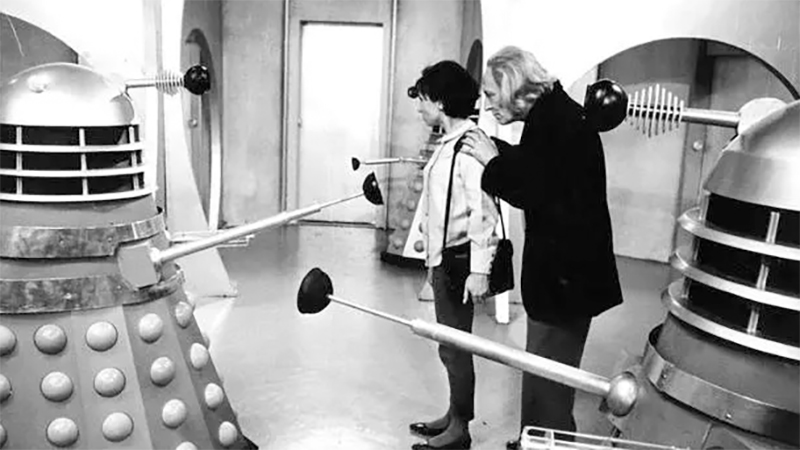
The Daleks, which originally aired in 1963-1964, stands as a monumental chapter in the show’s legacy.
This four-part serial, often referred to as the birth of the Daleks, remains a must-watch for any fan of the Doctor Who series, old and new.
A Pioneering Era
The Daleks marked the second-ever serial of the Doctor Who series, and it transported viewers to the edge of the unknown in a time when science fiction was still in its infancy on television.
This serial introduced the Doctor and his companions to the merciless and iconic foes, the Daleks.
The Genesis of the Daleks
This serial, originally consisting of seven episodes, unveils the origins of the Daleks.
It’s within these episodes that we’re introduced to the Daleks’ creators, the Kaleds, and their transformation into the genocidal creatures encased in armored shells.
The intricate and suspenseful narrative explores moral dilemmas and the consequences of scientific experimentation, making it a thought-provoking storyline.
The story also shows how the Daleks and the Thals represent two different outcomes of war and mutation.
The Daleks have become ruthless and hateful creatures who have lost their humanity.
The Thals have become peaceful and hopeful beings who have retained their humanity.
The story also shows how both races have different views on their history and their future.
The Fear of the Unknown
The Daleks are a pivotal part of science fiction history.
They are symbols of fear, machines devoid of compassion, and bent on the extermination of all life forms.
In this serial viewers were introduced to these remorseless, pepperpot-shaped villains.
The Daleks’ sinister cry of “Exterminate!” became synonymous with terror, and their metallic, relentless pursuit of destruction has been etched into the collective memory of science fiction enthusiasts.
Character Development and Growth
This serial is also a character-driven piece.
The Doctor, portrayed by William Hartnell, shows a deeply compassionate side as he becomes a champion for peace among the warring Thals and Kaleds, all the while combating the ruthless Daleks.
The story shows how the Doctor’s curiosity leads him to discover new worlds and new dangers.
It also shows how he grows from being an aloof and selfish traveler to being a compassionate and heroic leader.
The story also shows how his companions learn from him and from their experiences.
Susan, Ian, and Barbara are pushed to their limits, and their growth and resourcefulness are on full display, emphasizing the importance of teamwork and unity in the face of adversity.
Ian becomes more adventurous and resourceful; Barbara becomes braver and more caring; Susan becomes more mature and independent.
Innovative Production
The Daleks is notable for its innovative production values.
The serial features impressive set design, considering the budget constraints of the time, and visually stunning representations of the alien planet Skaro.
The Daleks themselves were groundbreaking creations that brought a sense of the extraordinary to the small screen.
They continue to be an enduring symbol of the show.
They have appeared in numerous Doctor Who episodes, spin-offs, and have become a cultural phenomenon.
This serial laid the foundation for their menacing presence, and it’s fascinating to witness their humble beginnings.
Beneath the iconic exteriors and thrilling adventures, The Daleks imparts timeless messages about the horrors of war, the dangers of unchecked scientific experimentation, and the importance of compassion and understanding in the face of conflict.
These themes are as relevant today as they were in the early 1960s.
The Daleks remains an essential episode in the Doctor Who canon, it’s a testament to the enduring appeal and creative brilliance of the series, proving that great storytelling knows no bounds and that the Doctor’s adventures will continue to captivate audiences for generations to come.
3. The Tenth Planet (1966)
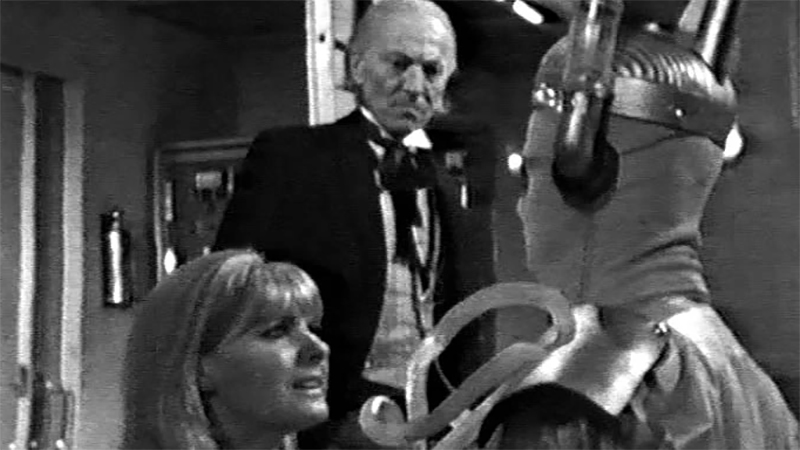
One of the more iconic and historic stories in Doctor Who history is The Tenth Planet, which was first broadcast in four weekly parts from October 8-29, 1966.
The story is set at the South Pole in 1986, where the Doctor and his friends encounter the Cybermen, a race of malevolent cyborgs that originated from Earth’s twin planet, Mondas.
The story also features the first regeneration of the Doctor, as he transforms from his first incarnation, played by William Hartnell, to his second incarnation, played by Patrick Troughton.
First Appearance of the Cybermen
The Tenth Planet is the story that introduces one of the most popular and enduring villains in Doctor Who history: the Cybermen.
The Cybermen are humanoids that have replaced most of their body parts with metal and plastic, in order to survive the harsh conditions of their dying planet.
They have also removed their emotions, which they consider to be a weakness.
They seek to convert other living beings into their own kind, or destroy them if they resist.
The Cybermen in The Tenth Planet are different from their later appearances, as they still retain some organic features, such as cloth faces and human hands.
They also have a distinctive voice, which sounds like a distorted radio transmission.
They are cold and ruthless, but also desperate and pitiful, as they try to save their planet from destruction.
The Cybermen pose a serious threat to the Earth, as they plan to drain its energy and use it to revive Mondas.
They also invade the Snowcap Base, a space tracking station where the Doctor and his companions are taken.
They kill several people there, including General Cutler, the commander of the base.
They also capture the Doctor and try to convert him into one of them.
The Cybermen are a fascinating and frightening enemy, as they represent a possible future for humanity if it loses its humanity.
They also challenge the Doctor’s morality and ethics, as he must decide whether to help them or stop them.
The Doctor Regenerates
The Tenth Planet is also the story that features the first regeneration of the Doctor, a process that allows him to change his appearance and personality when he is near death.
This was a creative solution to replace Hartnell, who was suffering from ill health and wanted to leave the show.
Patrick Troughton was cast as his successor, becoming the second actor to play the role.
The regeneration is not explained in detail in the story, as it was a new concept at the time.
The Doctor only says that his body is “wearing a bit thin”, and that he must renew himself.
He also mentions that it is part of being a Time Lord, an alien race that he belongs to.
The regeneration occurs at the end of the fourth and final episode, after the Doctor returns to his TARDIS with his companions Ben and Polly.
He collapses on the floor and his face starts to glow, then, his features change into those of Troughton.
The regeneration is a shocking and mysterious moment for both the characters and the viewers, as they witness a major change in the main character of the show.
It is also a bold and innovative move by the producers, as it allows the show to continue with a new actor and a new direction.
It also establishes a key element of Doctor Who’s mythology and longevity, as it enables the Doctor to regenerate into different incarnations over time.
4. The Web of Fear (1968)

The Web of Fear, an iconic Doctor Who serial from the show’s fifth season, is regarded as a classic and a must-watch episode among fans and critics.
Airing in 1968, this six-part adventure not only showcases the Second Doctor’s brilliance but also exemplifies the show’s mastery in creating suspenseful and memorable stories.
Intriguing Storyline and Setting
The serial begins with the TARDIS landing in the London Underground, where the Doctor, alongside his companions Jamie and Victoria, discovers the city under siege by a mysterious web-like substance and the menacing presence of the Great Intelligence.
As they navigate through the claustrophobic tunnels and face the threat of the Intelligence’s robot Yeti, a chilling and atmospheric tale unfolds.
The story’s setting within the tunnels of the London Underground creates an eerie and foreboding atmosphere, heightening the tension and providing a unique backdrop for the unfolding mystery.
This setting, coupled with the lurking fear of the unknown, contributes significantly to the serial’s appeal.
Introduction of Iconic Elements
The Web of Fear marks the return of the Yeti, which had previously appeared in the classic series’ The Abominable Snowmen.
These formidable and lumbering robotic creatures became synonymous with fear and mystery in Doctor Who lore, and their reappearance in this serial adds to the excitement and threat level of the storyline.
Furthermore, the introduction of Colonel Alistair Lethbridge-Stewart (later to become the beloved Brigadier) is a standout moment.
This character’s initial appearance in this serial laid the groundwork for a key figure in the Doctor Who universe, eventually becoming a recurring character and a fan-favorite in the series’ later years.
Suspenseful Plot and Character Dynamics
The serial’s strength lies in its gripping and suspenseful plot.
The Doctor and his companions find themselves caught in a battle against a formidable enemy, with tension escalating as they navigate the perilous Underground and encounter various challenges.
The character dynamics, particularly the relationship between the Doctor, Jamie, and Victoria, add depth to the storyline.
The camaraderie between the Doctor and his companions, their resourcefulness, and their unwavering determination in the face of danger further engage the audience.
Influence and Legacy
The Web of Fear holds historical significance within the Doctor Who universe.
Moreover, the serial’s impact on the show is noteworthy.
Not only did it introduce key elements and characters that became pivotal in the series, but it also laid the groundwork for future stories and the evolution of Doctor Who as a whole.
The Web of Fear is a story that marks a landmark in Doctor Who history. It is one of the most influential stories of the classic era, and one of the best examples of the Second Doctor’s era.
It also marks a turning point in the show’s tone and direction, as it introduces a darker and more realistic version of the Doctor, who has a hidden agenda and a master plan.
The story also acts as a precursor to the numerous later stories involving UNIT, which would become a staple of the show.
Timeless Appeal
Despite the era in which it was produced, The Web of Fear remains relevant and captivating to audiences even today.
Its ability to evoke suspense and fear while maintaining a sense of adventure and mystery transcends time, showcasing the enduring quality of classic Doctor Who storytelling.
The Missing Episodes
The Web of Fear is also one of the most sought-after stories of Doctor Who history, as it was missing from the BBC archive for over forty years.
Only one episode of the six was held in the BBC Archives; the rest were thought to have been destroyed.
However, in October 2013, the BBC announced that the previously missing episodes 2 and 4-6 were recovered from Nigeria.
Episode 3, however, was reportedly stolen by a private collector on its way back to the UK, so an animated reconstruction had to be made for episode 3.
On 16 August 2021, a special edition Blu-ray and DVD release of the serial saw the missing episode reconstructed using 3D motion capture animation, a first for missing episodes.
The Web of Fear is a story that deserves to be watched by any Doctor Who fan, as it is a masterpiece of storytelling, characterisation, and production.
It is a story that will keep you on the edge of your seat, make you laugh, make you cry, and make you think.
It is a story that will make you appreciate the brilliance and legacy of Doctor Who.
5. The War Games (1969)

The War Games, an epic ten-part serial from the sixth season of the classic Doctor Who series, stands as an exceptional testament to the show’s unparalleled storytelling and enduring legacy.
Airing in 1969, this monumental adventure not only marks the end of the Second Doctor’s era but also remains a fan-favorite and a pivotal moment in the show’s history.
Intriguing Plot and Ambitious Scale
At its core, The War Games is a sprawling narrative that sees the Doctor and his companions, Jamie and Zoe, land in the middle of a desolate battlefield.
The TARDIS crew finds themselves entangled in a series of war zones spanning different historical periods, only to uncover a complex scheme involving a powerful alien race, the War Lords.
What makes The War Games truly standout is its ambitious storytelling, interweaving various time zones and a multi-layered plot.
The narrative not only challenges the Doctor’s intellect but also raises the stakes to an unprecedented level. The scale of the story allows for in-depth exploration of the consequences of war and the abuse of power.
Introduction of Key Concepts
This serial introduces significant elements that have become iconic within the Doctor Who universe.
The story introduces the Time Lords, revealing glimpses of the Doctor’s home planet and his own people.
The concept of the Doctor as a renegade Time Lord and the potential consequences of his interference in the universe’s affairs are profoundly explored, setting the stage for future plot developments in the series.
Moreover, the idea of the Doctor’s ability to regenerate, a concept now integral to the show’s continuity, is first hinted at in The War Games.
This critical plot point fundamentally altered the landscape of Doctor Who, enabling the character to transcend generations and maintain the show’s longevity.
Character Depth and Emotional Resonance
The chemistry between the Doctor and his companions, Jamie and Zoe, shines throughout the serial.
Their courage, quick wit, and unwavering loyalty to each other and the Doctor make their characters endearing.
The camaraderie and emotional depth displayed by the trio add an extra layer of engagement for the audience.
The Doctor’s internal conflict and moral dilemmas are brought to the forefront in this story.
His dedication to justice and his desire to end the War Lords’ manipulations elevate the narrative into an emotional rollercoaster, as he faces the dire consequences of his actions.
Impact on the Series
The War Games serves as a significant turning point in the show’s history, leading to the Doctor’s regeneration and the introduction of a new era with Jon Pertwee taking on the role of the Third Doctor.
The serial’s impact on subsequent Doctor Who stories and the lore of the series remains profound.
Even after decades, this serial continues to enthrall audiences, showcasing the timeless brilliance and innovative storytelling that defines Doctor Who.
6. Spearhead from Space (1970)

This four-part serial marked the beginning of a new era for the show but also introduced several groundbreaking elements that continue to influence the series to this day.
Spearhead from Space marks the start of the Third Doctor’s tenure, played by Jon Pertwee.
This incarnation of the Doctor brought a new energy and charm to the role, introducing a more action-oriented and dashing persona that contrasted with his predecessors.
The serial is a perfect entry point for those unfamiliar with the show, as it presents a Doctor in the midst of regeneration and rediscovery, effectively resetting the narrative for both long-term fans and newcomers.
The Debut of Color and High Definition
One of the most notable aspects of Spearhead from Space is that it was the first Doctor Who serial to be filmed entirely in color.
This transition from black and white to color marked a significant visual upgrade for the show, allowing viewers to experience the alien worlds and creatures in a whole new way.
Furthermore, Spearhead from Space was filmed in high definition, making it the only classic Doctor Who serial to do so. The result is a visually stunning adventure with vibrant and richly detailed settings.
The serial’s setting, 1970s Earth, gives the story a contemporary feel that was rare for Doctor Who at the time.
The Doctor finds himself grounded on Earth with a broken TARDIS, making his adventures more accessible and relatable to audiences.
The down-to-earth setting and the presence of the military organization UNIT contribute to the serial’s unique appeal.
The Nestene Consciousness and the Autons
Spearhead from Space introduces the Nestene Consciousness, an alien entity that controls the Autons, plastic-like creatures with a sinister agenda.
This villainous combination of an intelligent, shape-shifting foe and an army of seemingly ordinary, inanimate objects contributes to a sense of dread and suspense that permeates the serial.
The Autons have made several comebacks in the modern era of Doctor Who, further solidifying their place in the show’s mythology.
Intriguing Plot and Character Development
Spearhead from Space offers a gripping narrative with elements of mystery, suspense, and adventure.
The Doctor must solve the mystery of the Auton invasion and protect Earth from this insidious threat.
The serial also showcases character development, particularly for the newly regenerated Doctor, who must adapt to his changed circumstances and learn to work with UNIT.
Spearhead from Space is not just a must-see Doctor Who episode; it’s a defining moment in the series’ history.
It introduced a new Doctor, a new era, and a fresh visual aesthetic that continues to influence the show’s modern incarnations.
The serial’s contemporary setting, memorable characters, and compelling plot make it accessible and engaging for both long-time fans and newcomers.
For seasoned fans, it’s a return to a pivotal moment in Doctor Who history.
For newcomers, it’s an ideal entry point into the rich and diverse world of the Time Lord.
Spearhead from Space is more than a must-see episode; it’s a testament to the show’s ability to evolve and reinvent itself while maintaining the core elements that have made it a beloved and enduring part of science fiction television.
7. The Daemons (1971)
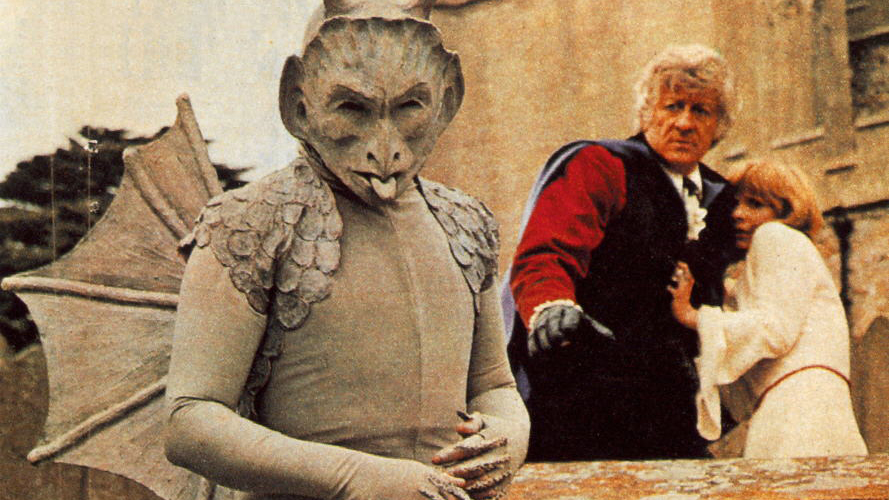
The Daemons marks a quintessential adventure from the Third Doctor’s era.
This period in the show’s history was known for its Earthbound stories and the Doctor’s association with UNIT.
The Daemons embodies this unique era and showcases the Doctor’s role as a defender of Earth against various alien threats.
A Glimpse into the Occult and Supernatural
One of the most distinctive aspects of The Daemons is its exploration of the occult and the supernatural.
The story takes place in the quaint English village of Devil’s End, where sinister rituals, witchcraft, and demonic forces come into play.
This juxtaposition of science fiction with elements of the paranormal adds depth and intrigue to the narrative.
The Confrontation with the Master
Roger Delgado’s portrayal of the Master in The Daemons is nothing short of brilliant.
The Master, the Doctor’s arch-nemesis, is at his malevolent best, manipulating the villagers and tapping into the ancient powers that lie beneath Devil’s End.
His character adds a layer of complexity and danger to the story, reminding us of the enduring conflict between the Doctor and the Master.
A Battle of Science and Superstition
The story provides a captivating clash between science and superstition.
The Doctor, a staunch advocate of reason and science, is confronted with ancient powers that defy rational explanations.
This core conflict underscores the Doctor’s unwavering commitment to uncovering the truth and challenging the unexplained.
The Daemons delivers a gripping narrative with elements of mystery, suspense, and adventure.
The Doctor must solve the mystery of the ancient alien force buried beneath Devil’s End while protecting Earth from an insidious threat.
The intricate plot highlights the Doctor’s resourcefulness and determination to outwit his adversaries.
A Defining Moment in Time
The Daemons is not just an episode; it is a defining moment in the history of Doctor Who.
It represents the show’s ability to explore diverse genres and themes while maintaining the core essence of the Doctor’s character.
The episode serves as a bridge between science fiction and the supernatural, showcasing the Doctor’s adaptability and his relentless pursuit of justice and truth.
8. Genesis of the Daleks (1975)

Genesis of the Daleks is a defining classic Doctor Who serial, hailed as one of the most iconic and influential episodes in the show’s extensive history.
Aired in 1975 during the show’s twelfth season, this six-part adventure not only delves into the origins of one of the series’ most notorious villains, the Daleks, but also presents thought-provoking ethical dilemmas, remarkable performances, and a gripping narrative.
Unraveling the Dalek Origins
At the heart of Genesis of the Daleks lies the exploration of the Daleks’ origins.
The Doctor, portrayed by the incomparable Tom Baker, is tasked by the Time Lords to travel back in time to the planet Skaro and prevent the creation of the Daleks.
The narrative dives deep into the history of the Daleks, offering insights into their genesis, their creator Davros, and the moral dilemmas surrounding their existence.
Moral Conundrums and Ethical Debates
This serial delves into profound ethical questions, emphasizing the consequences of altering history.
The Doctor faces the moral challenge of determining whether he has the right to change the course of the Daleks’ creation by destroying them before they wreak havoc across the universe.
The debates on the morality of preemptive action and the ramifications of interfering with a society’s natural progression add layers of depth to the storyline, making it more than just a typical sci-fi adventure.
Davros and the Birth of a Villain
Davros, the twisted and genius creator of the Daleks, is introduced in Genesis of the Daleks.
Michael Wisher’s portrayal of Davros is chilling and memorable, leaving an indelible mark on the Doctor Who universe.
His ideologies, his callousness, and his belief in the superiority of the Daleks make him one of the most compelling and formidable adversaries the Doctor faces.
The creation of Davros solidified the Daleks’ evolution from mere robotic foes to a race led by an unscrupulous and malevolent genius.
Intense Atmosphere and Suspenseful Plot
The serial maintains an intense and atmospheric tone throughout, showcasing the gloomy and war-torn landscape of Skaro.
The grim and dystopian setting, along with the looming threat of the Daleks, creates a palpable sense of dread and suspense.
The intricately woven plot keeps the audience engaged, as the Doctor navigates the intricate political landscape and battles against time to prevent the Daleks’ creation.
Impact and Enduring Influence
Genesis of the Daleks holds a pivotal place in Doctor Who’s history, not just for its storytelling but for its lasting impact on the series.
It contributes significantly to the development of the Doctor’s character and his ethical code, shaping his views on intervening in historical events.
Furthermore, the episode’s influence on the Daleks’ mythology and their subsequent appearances in the series is profound.
It solidified the Daleks as one of the most formidable adversaries in the Doctor Who universe, offering fans a deeper understanding of their origin and motivations.
Acting Performances and Character Dynamics
Tom Baker’s portrayal of the Fourth Doctor, alongside Elisabeth Sladen as Sarah Jane Smith and Ian Marter as Harry Sullivan, showcases remarkable performances.
The chemistry between the Doctor and his companions adds emotional depth to the story, enhancing the audience’s investment in the characters’ struggles and decisions.
Timeless Relevance
Despite being aired several decades ago, the themes and ethical dilemmas presented in Genesis of the Daleks remain as relevant and thought-provoking today as they were at the time of its release.
The moral questions raised about the use of power, the consequences of altering history, and the ethical considerations of intervention continue to resonate with audiences, showcasing the serial’s timeless quality.
This serial exemplifies the quintessence of Doctor Who, combining gripping storytelling, moral complexity, and iconic moments that have left an indelible mark on the show’s history.
9. Pyramids of Mars (1975)
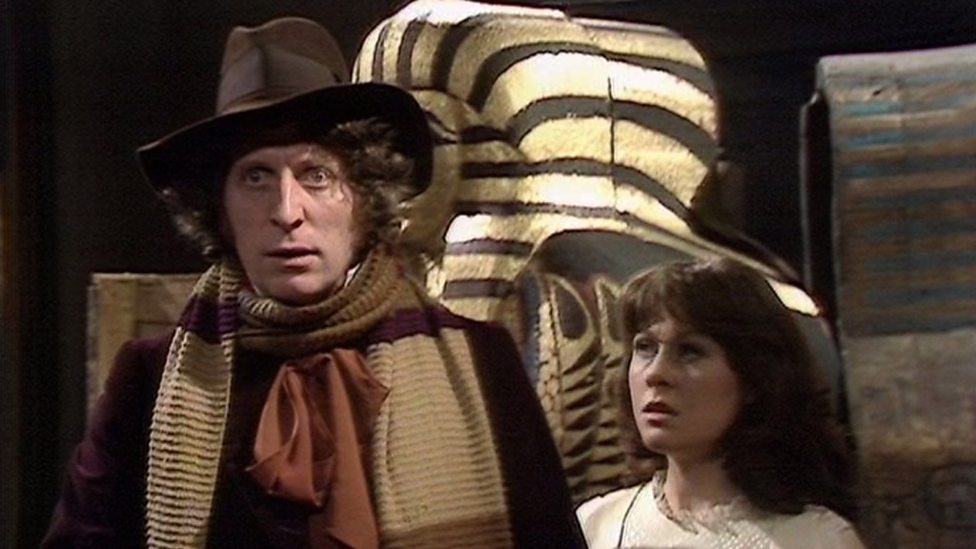
Pyramids of Mars features Tom Baker as the Fourth Doctor and Elisabeth Sladen as his companion Sarah Jane Smith.
The story is set in England and Egypt in 1911, where the Doctor and Sarah encounter an ancient alien menace known as Sutekh, who is based on the Egyptian god Set.
It is a classic example of Doctor Who’s creativity and diversity.
Pyramid of Mars is a story that showcases Doctor Who’s ability to blend different genres and styles, creating a unique and original experience.
The story combines elements of science fiction, horror, historical drama, and mythology, creating a thrilling and atmospheric adventure.
The story also explores different themes, such as destiny, power, evil, and sacrifice.
The story also demonstrates Doctor Who’s diversity and versatility, as it features a variety of characters and settings.
The story features characters from different backgrounds and professions, such as archaeologists, servants, cultists, robots, and mummies.
The story also features settings from different time periods and locations, such as the futuristic TARDIS, the Victorian mansion, the Egyptian pyramid, and the Martian spaceship.
Memorable Villains and Allies
Pyramid of Mars is a story that introduces or develops one of the most memorable villains and allies in Doctor Who history.
The story features the debut of Sutekh, an ancient and powerful alien who was once worshipped as a god by the Egyptians.
Sutekh is a member of the Osirian race, who have immense psychic abilities and can manipulate matter and energy.
Sutekh is also evil incarnate, who seeks to destroy all life in the universe out of boredom and hatred.
The story also features the return of Marcus Scarman, an old friend of the Doctor who was possessed by Sutekh when he opened his tomb in Egypt.
Scarman is a tragic figure who has lost his free will and his humanity under Sutekh’s influence.
He serves as Sutekh’s agent on Earth, building a rocket to destroy the Eye of Horus on Mars, which is keeping Sutekh imprisoned.
The serial shows the introduction of Laurence Scarman, Marcus’ brother who tries to help the Doctor stop Sutekh’s plan.
Laurence is a brave and loyal man who has a passion for science and technology.
He assists the Doctor in using his marconiscope to communicate with UNIT and in sabotaging Sutekh’s rocket.
Time-Bending Plot and High-Stakes Drama
The storyline is intricately woven with time travel elements, as the Doctor and Sarah Jane find themselves embroiled in a battle against time itself.
The high-stakes drama, the race against the clock to prevent Sutekh’s release, and the impending doom add layers of intensity to the narrative, keeping the audience on the edge of their seats.
Impact and Cultural Relevance
Pyramids of Mars is hailed not only for its entertainment value but also for its cultural significance within the Doctor Who canon.
Its contribution to the development of the series, its iconic portrayal of the Fourth Doctor, and the lasting impression it left on subsequent episodes solidify its position as a pivotal and influential classic Doctor Who episode.
Tom Baker’s Performance and Sarah Jane’s Character
Tom Baker’s portrayal of the Fourth Doctor in Pyramids of Mars is exemplary.
His eccentric yet compassionate portrayal, combined with his trademark scarf and wide-brimmed hat, made a lasting impression on audiences and contributed significantly to his status as an iconic Doctor.
Additionally, Sarah Jane showcases her courage and resourcefulness in this serial, establishing her as one of the most beloved companions in the show’s history.
Timeless Appeal and Enduring Legacy
Decades after its original airing, Pyramids of Mars continues to captivate both long-time fans and new audiences.
Its ability to blend elements of horror, science fiction, and historical intrigue while maintaining a sense of timeless suspense cements its enduring legacy within the Doctor Who universe.
The serial’s ability to enthrall audiences, deliver suspense, and leave a lasting imprint on Doctor Who’s legacy underscores its significance as a standout episode within the vast expanse of the series.
10. The Deadly Assassin (1976)

The Deadly Assassin, originally aired in 1976, is a must-see for Whovians, offering an unforgettable adventure and significant contributions to the series’ lore.
The Deadly Assassin is a quintessential Fourth Doctor adventure, known for its depth, complexity, and darker tone.
During this period, Doctor Who delved into more mature and intricate narratives, and this episode exemplifies the show’s evolution.
Gallifrey Unveiled
For the first time in the show’s history, The Deadly Assassin takes viewers to the Doctor’s home planet, Gallifrey.
This is a momentous event that peels back the layers of mystery surrounding the Time Lords, the Doctor’s own people.
The episode provides a fascinating glimpse into Gallifrey’s society, politics, and culture, all of which play pivotal roles in the unfolding story.
The Absence of a Companion
One of the distinctive elements of The Deadly Assassin is that it features the Doctor without a companion.
The absence of a companion accentuates the Doctor’s resourcefulness and adaptability, presenting a different facet of his character.
It also emphasizes the narrative’s focus on the Doctor’s journey and challenges.
Political Intrigue and a Murder Mystery
The serial unfolds as a political thriller and murder mystery on Gallifrey.
The Doctor is embroiled in a deadly game of intrigue and deception, framed for the assassination of the Time Lord President.
The combination of political maneuvering, a high-stakes murder investigation, and a ticking clock creates a gripping and suspenseful narrative that keeps viewers on the edge of their seats.
The Deadly Assassin introduces viewers to the Matrix, a powerful computer system used by the Time Lords to access the knowledge of the cosmos.
It’s a realm of virtual reality where the Doctor navigates complex landscapes, encountering mind-bending challenges.
The Matrix has been revisited in modern Doctor Who episodes, and its influence on the show’s mythology remains profound.
A Masterful Performance
The story features a brilliant performance by Peter Pratt as the decaying and malevolent Master, portraying the character at his most sinister.
The Master’s presence adds a layer of complexity and peril to the narrative, reminding viewers why he is one of the Doctor’s most iconic foes.
The Deadly Assassin significantly expands the lore of the Time Lords, introducing concepts like regeneration limits and the Panopticon, the central governing chamber of Gallifrey.
These ideas have left a lasting impact on the series and the understanding of the Doctor’s people.
The Deadly Assassin is a milestone in the show’s history that showcases its ability to tackle mature and intricate narratives while delving into the mythology of the Time Lords.
11. The Five Doctors (1983)
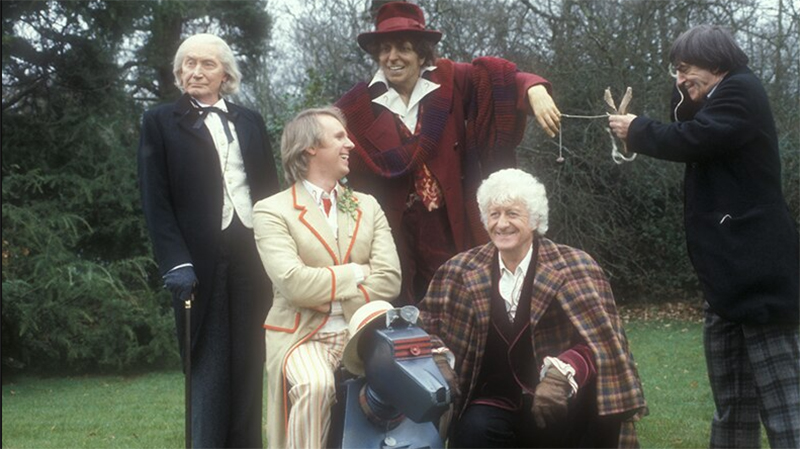
The Five Doctors, a two-part special aired in 1983 to celebrate the show’s 20th anniversary, is an indispensable episode for anyone seeking to understand the core essence of Doctor Who.
Embodying the Multifaceted Nature of Doctor Who
One of the most remarkable aspects of The Five Doctors is its ability to encapsulate the multifaceted nature of Doctor Who.
The series thrives on its ability to tell a wide array of stories, ranging from historical dramas to futuristic space operas, and The Five Doctors manages to incorporate various elements from the show’s history.
It blends science fiction, action, mystery, and even a touch of humor into a single narrative, offering a microcosm of what Doctor Who represents.
The special brings together characters and elements from various eras of the show, including companions, monsters, and villains.
From the Daleks and Cybermen to K-9 and Brigadier Lethbridge-Stewart, The Five Doctors pays homage to the diversity of characters and storylines that have graced the series over the years.
A Time-Bending Adventure
The special takes the concept of time manipulation to new heights, featuring the Time Scoop, a device that plucks the various Doctors and their companions from different points in their respective timelines.
This extraordinary device enables the story to traverse the Doctor’s entire history, creating a narrative that spans decades within the show’s own continuity.
The concept of time travel and temporal manipulation is at the heart of Doctor Who, and The Five Doctors beautifully showcases the inherent complexities and challenges that arise from the ability to move through time and space.
The Different Doctors
One of the most compelling aspects of The Five Doctors is the opportunity to witness the interaction of the various incarnations of the Doctor.
This special features the First, Second, Third, Fourth and Fifth Doctors.
The unique characteristics and quirks of each Doctor shine through, offering a comprehensive view of the Time Lord’s evolution over time.
This interaction between multiple Doctors underscores the central concept of regeneration, a fundamental aspect of Doctor Who.
Regeneration is not merely a plot device; it is an exploration of the idea that change is inevitable and that the essence of the Doctor endures even as the external appearance and personality evolve.
For newcomers to the series, this interaction serves as an introduction to the core concept of regeneration and the show’s ability to evolve with the changing times.
The Enduring Legacy of Doctor Who
The Five Doctors was created to celebrate the show’s 20th anniversary, and it is itself a testament to the enduring legacy of Doctor Who.
The episode includes nods to the show’s past and future, including the introduction of the Time Lords’ new President and the foreshadowing of the Doctor’s future companions.
12. The Caves of Androzani (1984)

The Caves of Androzani is the sixth serial of the 21st season of Doctor Who, which was first broadcast in four twice-weekly parts on BBC1 from March 8 to 16 1984.
It features Peter Davison as the Fifth Doctor and Nicola Bryant as his companion Peri Brown.
It also marks the first appearance of Colin Baker as the Sixth Doctor, who takes over at the end of the story.
The story is set on the planet Androzani Minor, where the Doctor and Peri become involved in a war for control of the life-prolonging substance “spectrox” between the ruthless businessman Morgus and the android-builder Sharaz Jek.
A Defining Moment for the Fifth Doctor
Peter Davison’s portrayal of the Doctor is at its best, and his character undergoes profound growth and transformation.
This story exemplifies the depth and complexity of the Fifth Doctor’s personality and the challenges he faces.
The serial unfolds as a suspenseful and fast-paced narrative.
The Doctor and Peri find themselves embroiled in a dangerous situation on the mining planet of Androzani Minor, where they become unwittingly involved in a deadly conflict between rival factions.
The ticking clock, political intrigue, and desperate circumstances create a thrilling and captivating plot that keeps viewers on the edge of their seats.
The Caves of Androzani features a rich cast of characters, each with their own motivations and moral ambiguities.
Sharaz Jek, a disfigured and vengeful villain, stands as one of the most memorable adversaries in the show’s history.
His complex and sympathetic character adds depth to the story, challenging the conventional notions of good and evil.
The Peril of Spectrox Toxemia
The Doctor and Peri’s plight in The Caves of Androzani is compounded by the deadly Spectrox Toxemia, a deadly disease that drives the urgency of the narrative.
Their desperate race against time to find a cure adds a layer of tension and fear to the story.
Outstanding Direction and Cinematography
The serial is known for its outstanding direction and striking cinematography.
The underground caves of Androzani Minor are brought to life with remarkable visual storytelling, enhancing the sense of danger and claustrophobia.
The direction and aesthetics of this episode set a high standard for the show.
A Poignant Farewell
The Caves of Androzani serves as the swan song for the Fifth Doctor.
It culminates in a powerful and poignant regeneration scene, as the Doctor makes the ultimate sacrifice to save Peri.
Davison’s farewell is both emotional and memorable, making this episode a key moment in the character’s journey.
The Caves of Androzani is more than just a must-watch Doctor Who episode; it’s a classic and timeless adventure that exemplifies the show’s ability to deliver outstanding storytelling and character development.
For long-time fans, it’s a return to a defining moment in the series. For newcomers, it’s an invitation to explore the rich and diverse universe of Doctor Who, showcasing the show’s capacity for dramatic excellence and emotional depth.
13. Remembrance of the Daleks (1988)
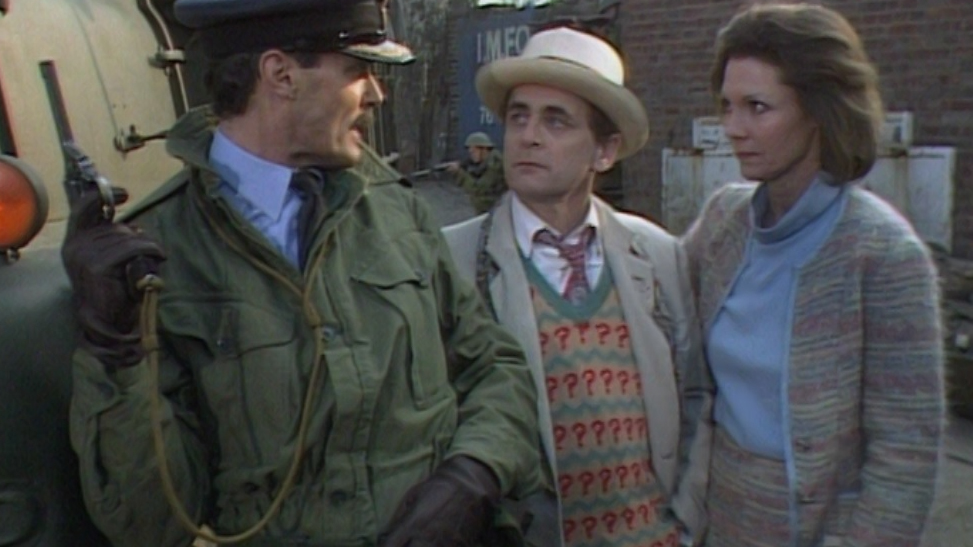
Remembrance of the Daleks is the first serial of the 25th season of Doctor Who, which was first broadcast in four weekly episodes in October 1988.
It features Sylvester McCoy as the Seventh Doctor and Sophie Aldred as his companion Ace.
The story is set in London in 1963, where the Doctor returns to retrieve something he left behind during his first visit.
He soon discovers that two factions of Daleks are also there, looking for the same thing: the Hand of Omega, a powerful device that can manipulate stars.
The Seventh Doctor’s Ascendancy
Remembrance of the Daleks is a pivotal episode within the Seventh Doctor’s era, marking the beginning of his tenure.
Sylvester McCoy’s portrayal of the Doctor exhibits a unique blend of cunning intelligence and mystery.
This story is a testament to his Doctor’s evolution and complexity.
Remembrance of the Daleks is a story that marks a turning point in the show’s tone and direction, as it introduces a darker and more realistic version of the Doctor, who has a hidden agenda and a master plan.
The story reveals that the Doctor is not just a curious and comedic traveler, but also a manipulative and mysterious Time Lord, who has a secret past and a cosmic responsibility.
The story shows that the Doctor is willing to use deception, violence, and sacrifice to achieve his goals, even if it means endangering his friends, destroying his enemies, or altering history.
A Thoughtful and Multilayered Plot
The narrative of Remembrance of the Daleks is both thought-provoking and multifaceted.
Set in London during the 1960s, it delves into themes of racism, social change, and political intrigue.
The Doctor and Ace become embroiled in a complex conflict between two Dalek factions and a group of renegades.
The story’s underlying exploration of human nature and prejudice adds depth and relevance to the plot.
Ace: A Companion with Attitude
Remembrance of the Daleks introduces Ace, one of the most beloved companions in Doctor Who’s history.
She is a strong, independent, and rebellious character, representing a more modern and assertive companion.
Her character adds dynamism and a new dimension to the Doctor-companion dynamic, making her an instant fan favorite.
Iconic Moments and Fan Service
This serial marks the return of Davros, the creator of the Daleks.
Terry Molloy delivers a powerful and chilling performance as the manipulative and megalomaniacal Davros.
His presence elevates the stakes and reminds viewers of the enduring menace of the Daleks.
Remembrance of the Daleks is filled with iconic moments that have left a lasting impact on the series.
The Doctor’s use of a baseball bat as a weapon, the epic battle in Totters Lane, and the destruction of Skaro, the Daleks’ home planet, are all unforgettable scenes.
This serial pays homage to the show’s history, offering fans moments of nostalgia and celebration.
The Hand of Omega
The story introduces the Hand of Omega, a Time Lord artifact of great power.
Its role in the plot adds a layer of mystery and intrigue, as it becomes a key element in the Doctor’s battle against the Daleks.
The Hand of Omega’s significance has resonated throughout the show’s lore.
Remembrance of the Daleks is known for its impressive production values and special effects, which have aged remarkably well.
The Dalek battles and action sequences are skillfully choreographed, adding to the serial’s cinematic quality.
Remembrance of the Daleks is a story that deserves to be watched by any Doctor Who fan, as it is a masterpiece of storytelling, characterisation, and production.
It is a story that will keep you engaged, entertained, and enlightened.
It is a story that will make you appreciate the brilliance and legacy of Doctor Who.
14. The Curse of Fenric (1989)
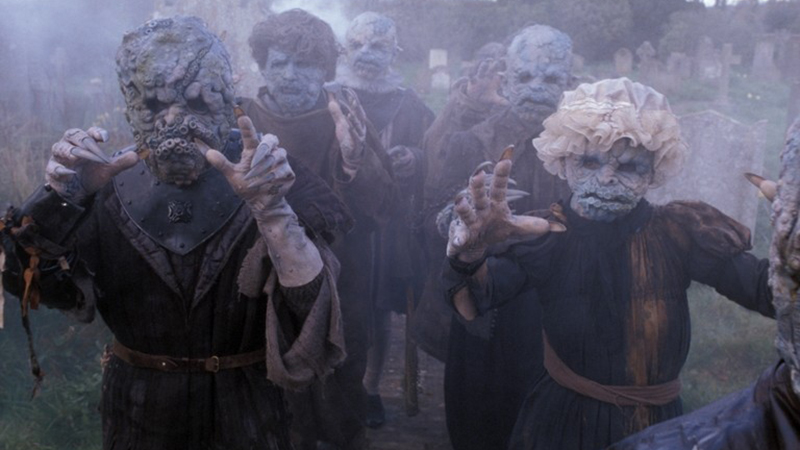
The Curse of Fenric is set in 1943, during World War II, at a secret naval base in Northumberland, England.
The Doctor and Ace arrive there and discover that the base is working on a top-secret project: cracking the German code machine called the ULTIMA.
However, they soon realize that there is a sinister force behind the project: an ancient evil entity called Fenric, who has been manipulating human history for centuries.
Fenric is a powerful being who can control people’s minds by exploiting their faith or lack thereof.
He has also brought with him a horde of vampiric creatures called the Haemovores, who are the future descendants of humanity mutated by pollution.
The Doctor and Ace have to stop Fenric from unleashing his final curse: a nuclear bomb that will destroy the world and allow the Haemovores to take over.
The Curse of Fenric is a story that explores themes such as faith, loyalty, betrayal, love, sacrifice, and destiny.
It also features some of the best performances and character development in the series.
Sylvester McCoy’s Masterful Doctor
Sylvester McCoy delivers a masterful portrayal of the Doctor as a dark and manipulative figure who has to face his own past and secrets.
The Curse of Fenric stands as a defining moment in the Seventh Doctor’s era.
Sylvester McCoy’s portrayal exhibits the Doctor’s cunning intellect and his inclination for playing the long game.
The story is a testament to the complexity and enigmatic nature of this incarnation of the Doctor.
A Complex and Multilayered Plot
The narrative of The Curse of Fenric is deeply complex, challenging the viewers with intricate layers of storylines.
Set during World War II, it explores themes of love, betrayal, and the devastating power of secrets.
The Doctor and his companion Ace become entangled in a web of intrigue, battling an ancient evil force and the secrets buried deep within a military base.
The story’s exploration of human nature, trust, and redemption adds depth and relevance to the plot.
The Evolution of Ace
Sophie Aldred gives a stunning performance as Ace, who undergoes a dramatic emotional journey as she learns more about her family history and confronts her fears.
Ace a fan-favorite companion, undergoes significant character development in The Curse of Fenric.
Her journey from a rebellious and fiery teenager to a strong, independent, and compassionate character reaches a climax in this story.
Her growth and maturity are central to the narrative, offering a captivating character arc.
Intriguing Supporting Characters
The Curse of Fenric features a cast of intriguing supporting characters, each with their own secrets and vulnerabilities.
Captain Sorin, a Soviet commando who is secretly in love with Ace, and Dr. Judson, a wheelchair-bound genius who invented the ULTIMA machine, are memorable figures who add depth and complexity to the story.
The relationships and moral dilemmas among the characters are central to the narrative.
Time as a Key Element
Time, as a fundamental element of Doctor Who, plays a pivotal role in this story.
The concept of time as a weapon, the manipulation of events, and the consequences of one’s actions over time are explored with depth and complexity.
The story is saturated with themes of redemption and betrayal.
Characters are forced to confront their past actions, facing the consequences of their decisions.
The struggle for redemption and the power of trust and forgiveness are central to the plot.
Conclusion
As we’ve journeyed through these stories, exploring 14 classic adventures that are a must-see for both dedicated fans and newcomers, we’ve witnessed the show’s capacity to reinvent itself, tackle multifaceted themes, and embrace a rich diversity of genres and eras.
They remind us that, at its core, Doctor Who is more than just a television show; it’s a cultural touchstone, a beacon of creativity, and a showcase of humanity’s boundless imagination.
These adventures provide a taste of the series’ vast universe, highlighting the enduring themes of change, heroism, time travel, and the resilience of the human spirit.
Doctor Who has transcended time and space to become a beloved and enduring part of science fiction television.
The series has withstood the test of time, captivating audiences across generations.
The fact that the show was still going strong after almost six decades is a testament to its ability to reinvent itself and connect with viewers.
